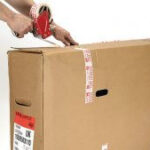Are you struggling with discomfort while riding your road bike? How To Be Comfortable On A Road Bike is a common concern, and at usabikers.net, we understand the need for a pain-free, enjoyable ride, which means optimizing your bike setup and body positioning. This guide provides practical solutions and adjustments to enhance your comfort and overall cycling experience. Discover how to adjust your bike for a smoother, more enjoyable ride with tips on saddle selection, handlebar adjustments, and more so you can experience pain-free cycling.
1. Adjust Your Reach
The horizontal distance from your bottom bracket to your handlebars, also known as your reach, is a critical measurement, second only to saddle height. What makes adjusting your reach so important? With an improper reach, you might experience sore shoulders, a tight lower back, and an unstable aero position.
An improper reach is also extremely uncomfortable, and it can even lead to the development of saddle sores.
How do I adjust my reach for optimal comfort?
To adjust your reach, consider these options:
- Try a different length stem: If your reach feels too long, a shorter stem is generally recommended. Conversely, if your reach feels too short, a longer stem can extend it.
- Slide your saddle: For a simpler adjustment, try sliding your saddle forward or backward. Be mindful of how this affects your saddle height, and double-check accordingly.
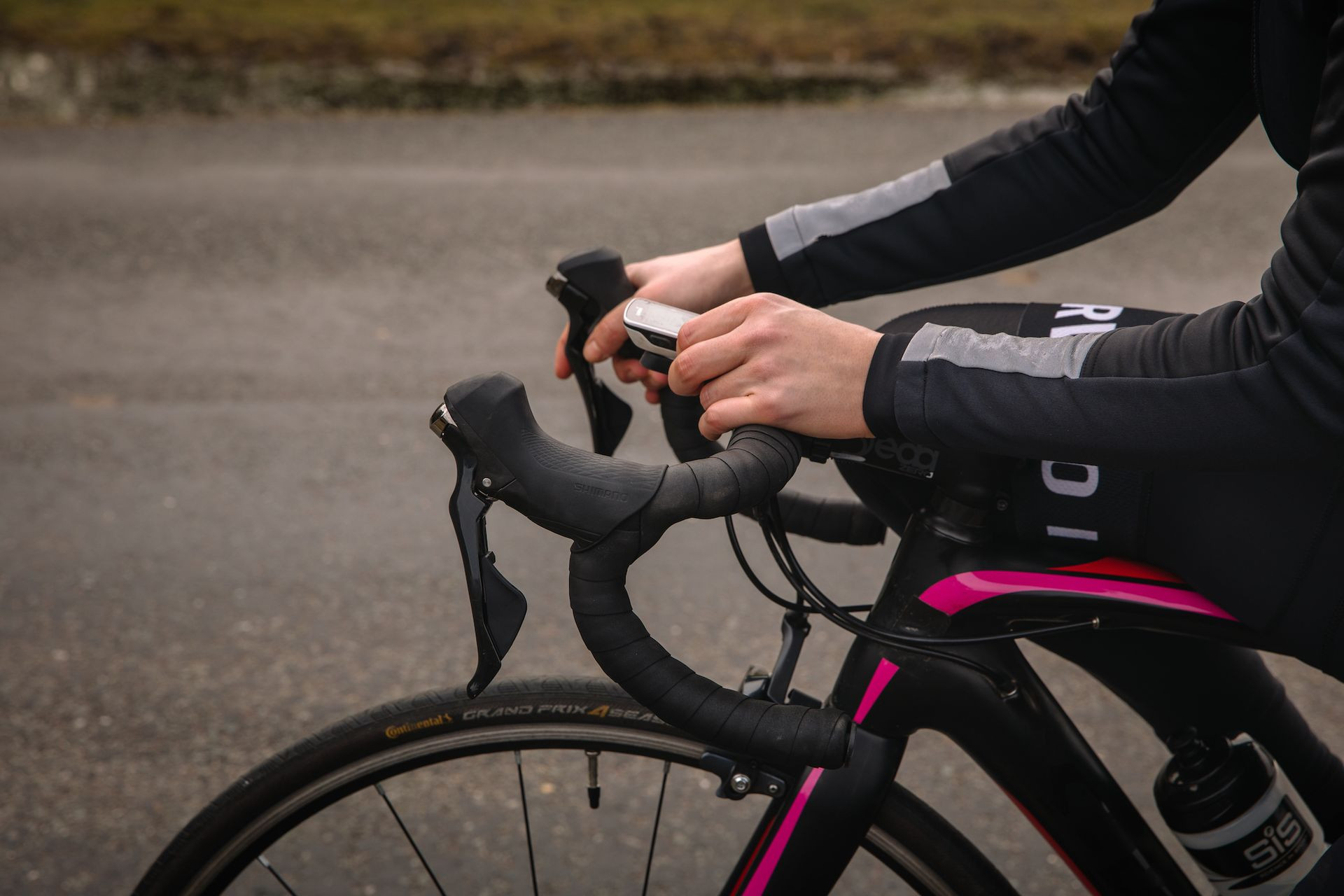 Adjusting bike reach by changing the stem
Adjusting bike reach by changing the stem
2. Adjust Your Handlebar Height or Stem Angle
Besides the distance to your handlebars, their height also plays a significant role in your comfort. What factors determine the optimal handlebar height? Adjusting the stack height or stem angle can help you achieve the right position.
How do I adjust my handlebar height or stem angle for maximum comfort?
Consider these methods:
- Add Spacers: Adding spacers between the stem and headtube raises the handlebars, resulting in a more upright position that reduces pressure on your shoulders, wrists, and hands.
- Adjust stem Angle: By changing your stem angle, you can fine-tune your handlebar height. Flipping your stem from a negative to a positive angle can provide a noticeable difference. Remember, altering handlebar height also affects your reach, so keep that in mind.
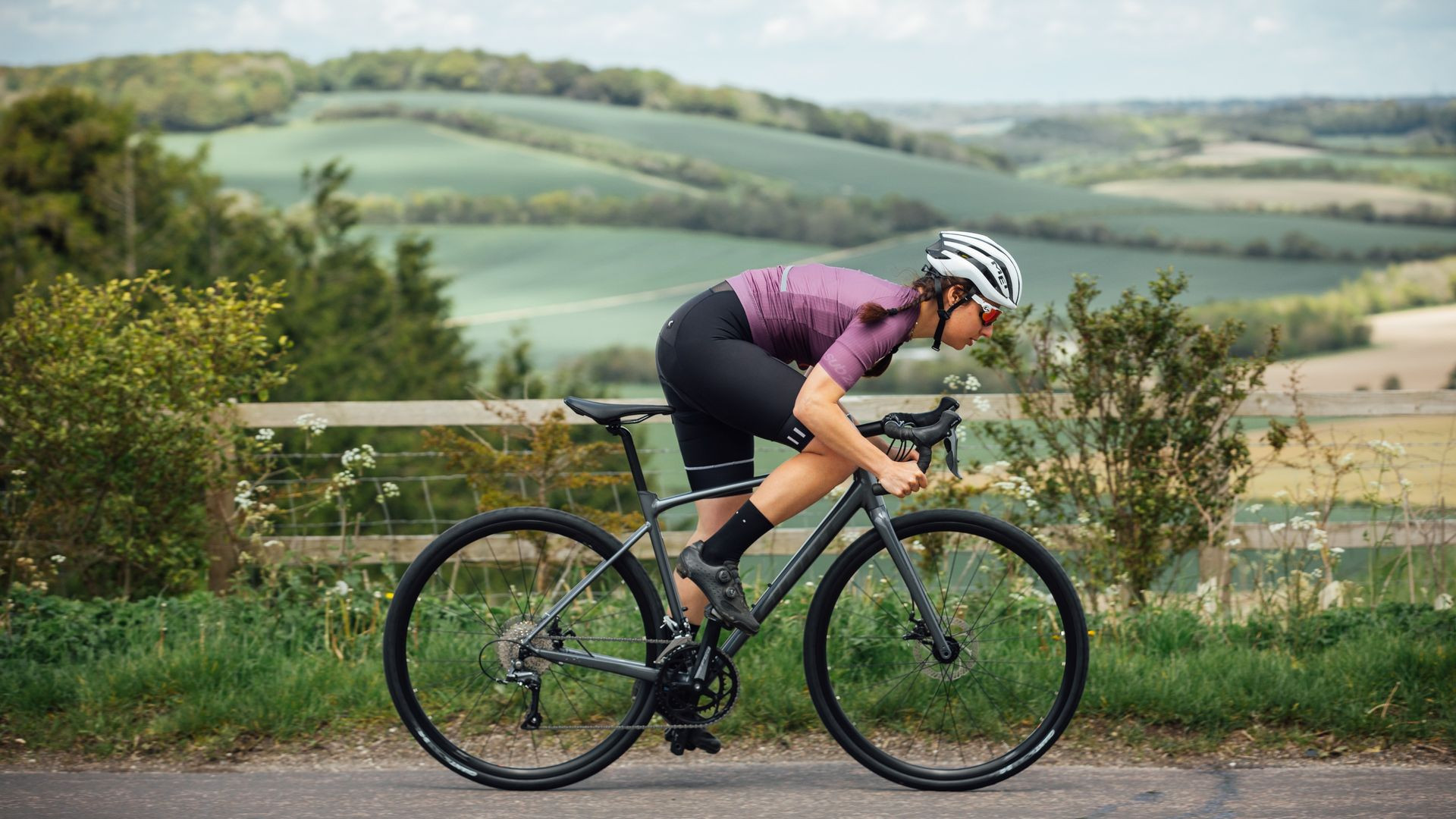 Rider in an aggressive position on their road bike
Rider in an aggressive position on their road bike
3. Try A Different Saddle
Saddle sores are a cyclist’s nightmare, causing discomfort both on and off the bike. What role does the saddle play in preventing saddle sores? The right saddle can make all the difference.
How do I find the best saddle for my comfort?
Consider these factors:
- Size and Padding: Contrary to what you might think, larger saddles with excessive padding aren’t always better. Thinner, smaller saddles often reduce chafing and bouncing, leading to less discomfort.
- Anatomical Fit: Look for anatomically fitted, lightweight saddles with a split or cutout in the middle. These designs minimize pressure on sensitive areas.
- Personal Preference: Ultimately, the best saddle is a matter of personal preference. Experiment with different styles to find what suits you best. Many local bike shops offer trial periods, allowing you to test saddles before committing to a purchase.
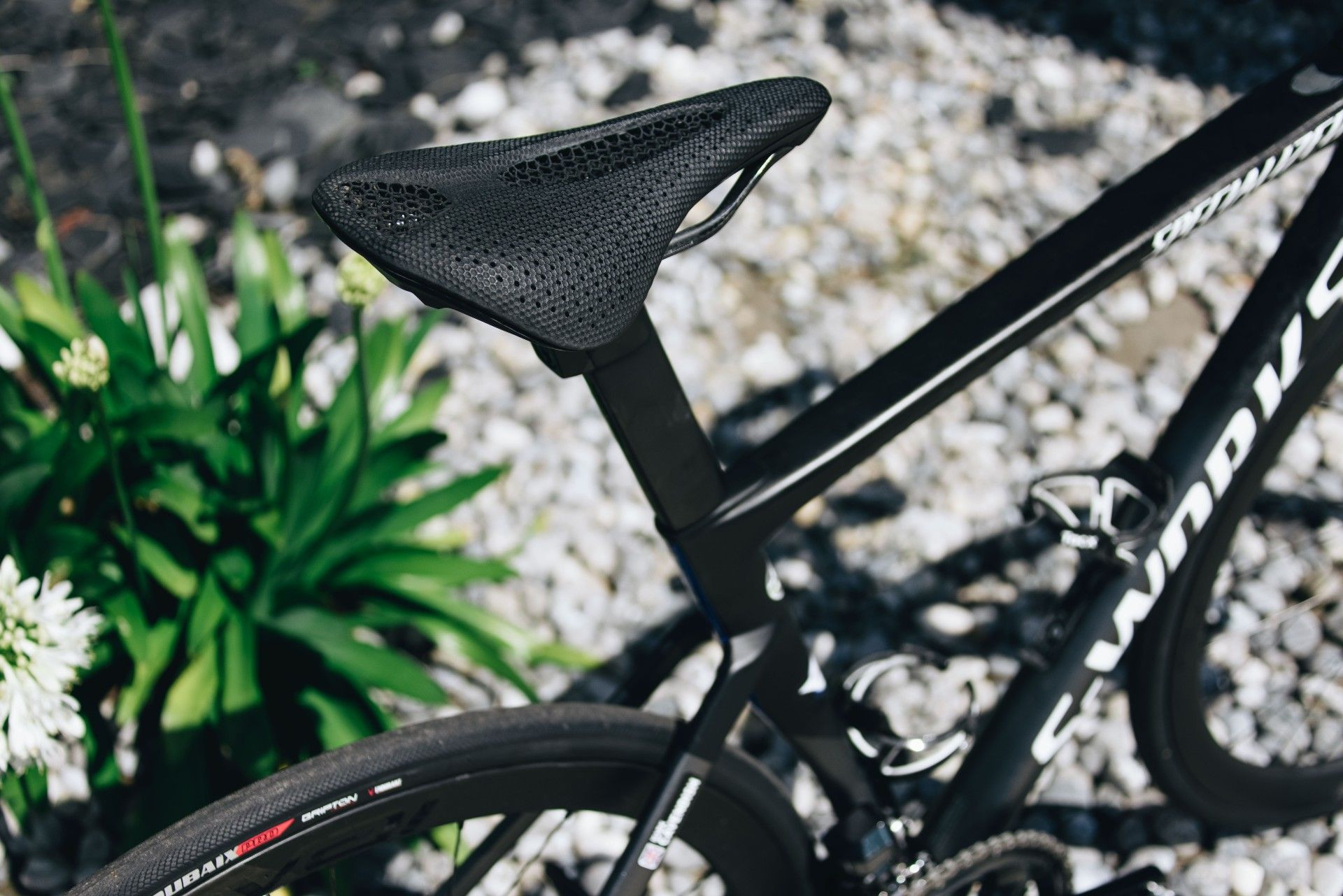 Different bike saddles
Different bike saddles
4. Check Your Saddle Height
It’s always wise to re-check your saddle height, regardless of how many times you’ve done it before. What makes saddle height so crucial? A seat post can gradually slip, or you might have changed physically.
How do I ensure my saddle height is properly set?
Here’s how:
- Impact on Performance: A saddle that is too low compromises power output and pedaling efficiency, whereas a saddle that is too high can cause IT band syndrome and knee pain.
- Measurement: Measure your inseam and subtract 10cm to estimate your saddle height, measured from the center of the bottom bracket to the top of the saddle.
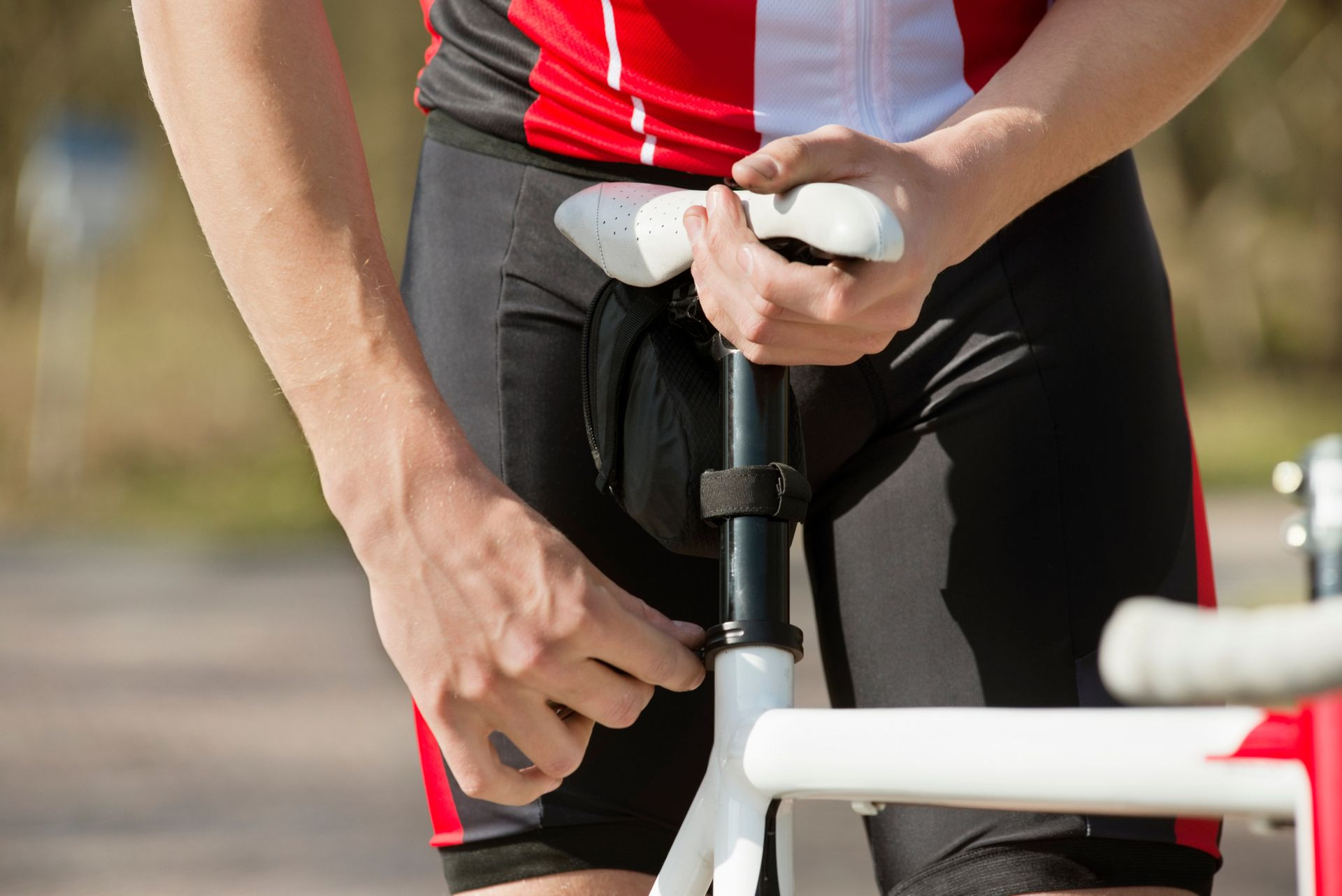 Rider adjusting saddle height on their road bike
Rider adjusting saddle height on their road bike
5. Adjust Your Saddle Angle
Setting your saddle so it is flat isn’t always optimal. What options are available for adjusting saddle angle? Experimenting with different angles can significantly impact your comfort.
How do I find the right saddle angle?
Consider these points:
- Personal Preference: Some riders prefer the nose down, while others prefer it up. Try both to see what feels best.
- Impact on Pressure: Lowering the saddle nose may relieve pressure around your sit bones but can put more weight on your arms. Tilting the saddle nose upwards may increase the pressure on your sit bones but can balance your position.
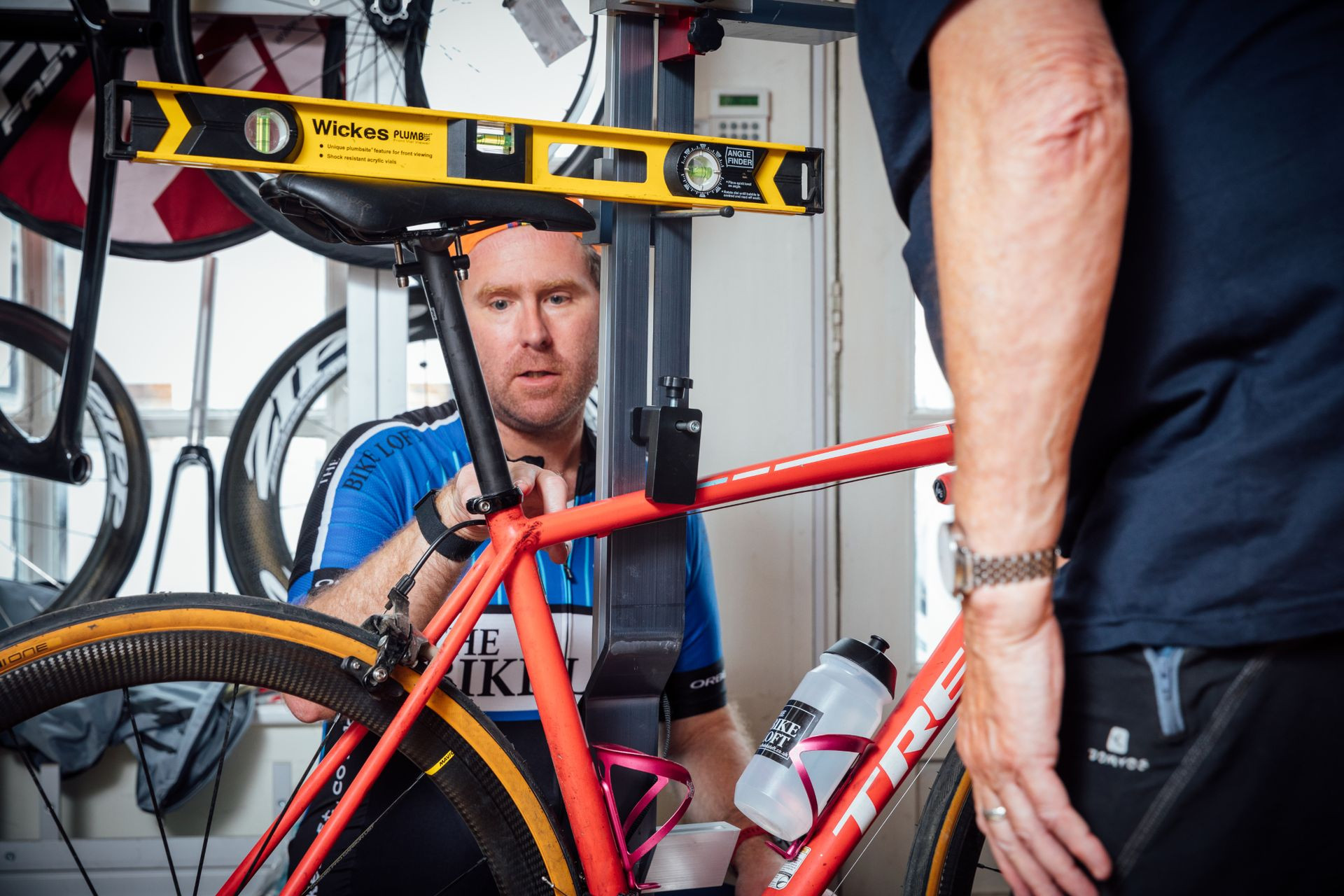 Measuring saddle angle for adjustment
Measuring saddle angle for adjustment
6. Check Your Cleats
Cleat setups are often overlooked, yet they are a leading cause of lower body pain in cycling. What issues can arise from incorrect cleat placement? Incorrect cleat setup can cause knee and hip pain, IT band syndrome, and ankle problems.
How do I set up my cleats correctly?
Here’s what to do:
- Starting Point: Begin with your cleats set up in the middle of your shoe. This aligns your cleat with the ball of your foot and keeps your knee in line with your pedaling motion.
- Professional Evaluation: If the standard positioning is uncomfortable, consult a professional bike fitter. They can evaluate your angles and identify any structural imbalances.
- Cleat Float: Opt for cleats with float, allowing slight movement when clipped into the pedal.
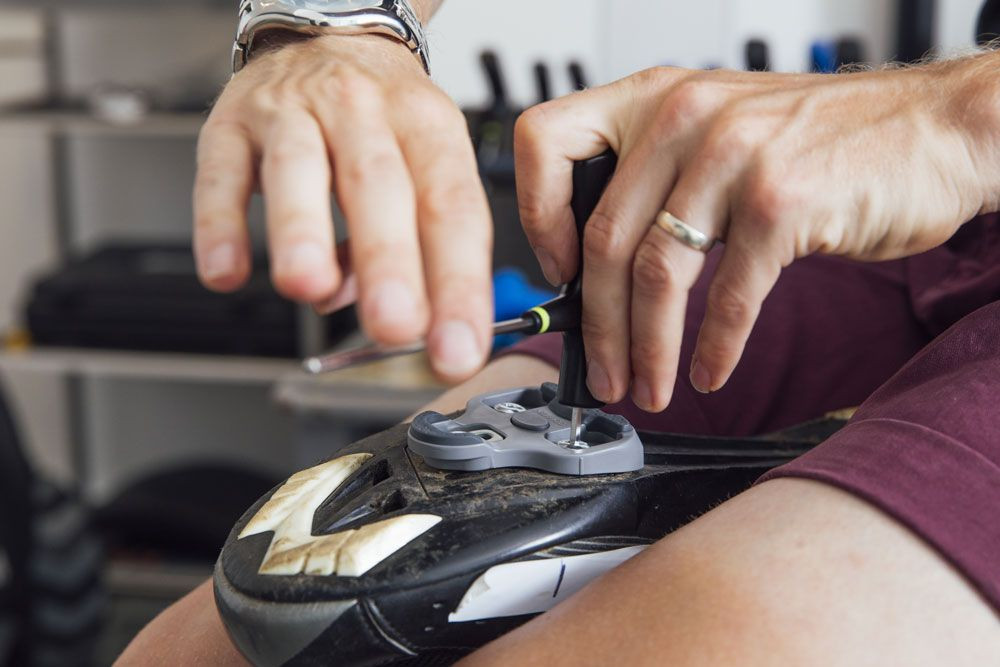 Rider adjusting their cleat setup
Rider adjusting their cleat setup
7. Double Wrap Bar Tape
This old-school trick, popular among professional cyclists during races like Paris-Roubaix, adds extra padding to your hands. What benefits does double-wrapped bar tape provide? It cushions against the blows from the road.
How do I apply double-wrapped bar tape?
The process is straightforward:
- Additional Layer: Simply apply a second layer of bar tape over the first.
- Gel Inserts: For even more cushioning, add gel inserts underneath the bar tape.
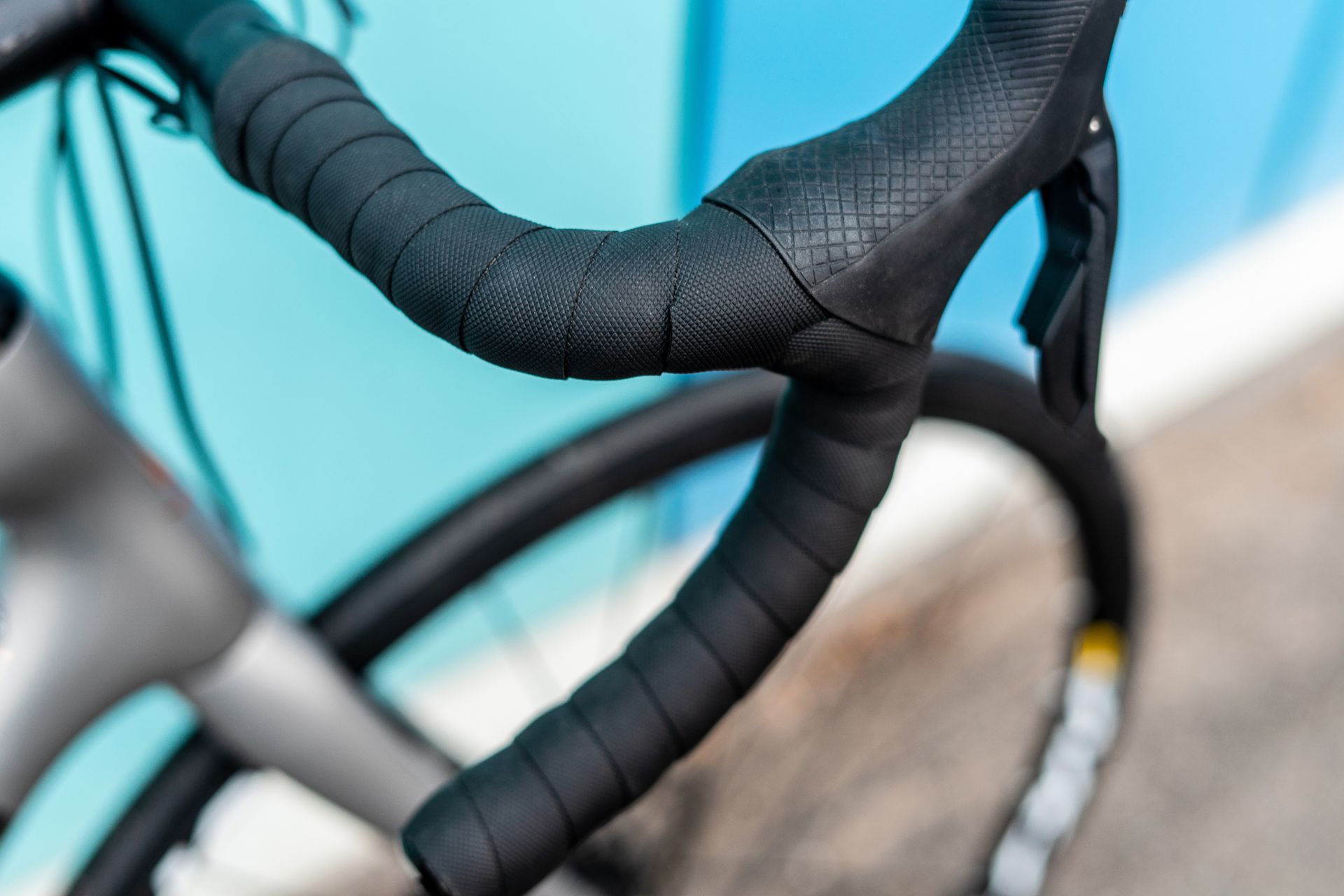 Close up of bar tape on a road bike
Close up of bar tape on a road bike
8. Adjust Your Tire Pressure
Your tires are the first point of contact with the road, and every bump you hit sends a shockwave through your bike and into your body. How can adjusting tire pressure improve comfort? Lowering tire pressure can help protect you from rough surfaces.
What is the optimal tire pressure for comfort?
Consider these factors:
- Pressure Range: The myth of 120psi being the fastest tire pressure has been debunked. A range of 80 to 95psi is often more effective, depending on the road surface and rider size.
- Ride Quality: Lowering your tire pressure to 80 to 95psi improves your ride quality and cushions against rough roads and potholes.
9. Fit Mudguards
Riding in the rain can be particularly uncomfortable, especially without proper protection. What role do mudguards play in improving comfort? Mudguards are underrated protectors against rain and wet roads.
How do mudguards enhance my riding experience?
Mudguards help keep your bum and backside dry, keeping you warm and comfortable. There are various styles to choose from, including clip-on and saddle-attached models.
10. Buy a New Bike (and Make Sure It’s The Right Size)
If all else fails, it might be time for a new bike. What impact does bike size have on comfort? A bike that fits correctly makes a world of difference.
How do I ensure my new bike is the right size?
Consider these steps:
- Professional Assessment: Consult a bike fitter who can take vital measurements and recommend the ideal bike size for you.
- Proper Fit: No matter how amazing a bike is, it won’t be comfortable if it’s not the right size.
Understanding User Intentions
To effectively address user needs, let’s identify five key search intents related to “how to be comfortable on a road bike”:
- Finding the Right Bike Fit: Users want to know how to adjust their bike to fit their body properly.
- Preventing Pain and Discomfort: Cyclists are seeking solutions to avoid common issues like saddle sores, back pain, and numbness.
- Improving Ride Quality: Riders aim to enhance their overall cycling experience by making their rides smoother and more enjoyable.
- Selecting Comfortable Gear: Users need advice on choosing the right saddles, handlebars, and other components for maximum comfort.
- Optimizing Riding Technique: Cyclists want to learn how to adjust their riding style to minimize strain and discomfort.
FAQ: How To Be Comfortable On A Road Bike
1. What is the most common cause of discomfort on a road bike?
The most common cause of discomfort on a road bike is improper bike fit, including incorrect saddle height, reach, and handlebar position, leading to pain and inefficiency. Getting a professional bike fit and making adjustments based on your body’s needs is crucial for comfort.
2. How do I prevent saddle sores when cycling?
Prevent saddle sores by choosing a well-fitted saddle, wearing quality cycling shorts, applying chamois cream, maintaining good hygiene, and ensuring your bike fit is optimized to reduce pressure. Regular adjustments and trying different saddles can also help.
3. What is the ideal handlebar height for a comfortable road bike ride?
The ideal handlebar height for a comfortable road bike ride varies by individual, but generally, a higher handlebar position is more comfortable for beginners, reducing strain on the back and neck, while experienced riders may prefer a lower position for aerodynamics. Experiment to find what works best for your flexibility and riding style.
4. Can tire pressure affect the comfort of my road bike?
Yes, tire pressure significantly affects road bike comfort; lower tire pressure absorbs more road vibrations, providing a smoother ride, while higher pressure is faster but less comfortable. Adjust tire pressure based on your weight, tire size, and road conditions for optimal comfort.
5. How often should I adjust my bike fit to maintain comfort?
You should adjust your bike fit as needed, especially if you experience pain or discomfort, make significant changes to your riding style, or after a change in physical condition. Regular check-ups and minor adjustments can prevent long-term discomfort.
6. What are the best cycling shorts for long-distance comfort?
The best cycling shorts for long-distance comfort feature high-quality chamois padding, a snug but not restrictive fit, breathable fabric, and flat seams to minimize chafing, ensuring a comfortable ride. Look for shorts designed for endurance riding.
7. How important is cleat positioning for road bike comfort?
Cleat positioning is crucial for road bike comfort as it affects knee alignment and pedaling efficiency; improper cleat placement can cause knee pain, foot discomfort, and reduced power. Ensure cleats are positioned correctly to align your foot naturally on the pedal.
8. Should I consider double-wrapping my handlebar tape for more comfort?
Yes, consider double-wrapping your handlebar tape for added comfort, especially on rough roads; it provides extra cushioning, reduces hand fatigue, and absorbs vibrations, enhancing your overall riding experience.
9. What type of saddle is best for female cyclists seeking comfort?
The best type of saddle for female cyclists seeking comfort often features a wider design and a central cutout or channel to relieve pressure on soft tissues, providing a more comfortable ride. Try different shapes and widths to find the best fit.
10. How can a bike fit help improve my comfort and performance?
A professional bike fit improves comfort and performance by optimizing your body position on the bike, reducing strain, preventing injuries, and maximizing power output, resulting in a more enjoyable and efficient riding experience.
Enhance Your Cycling Experience with usabikers.net
Ready to transform your road bike experience? At usabikers.net, we offer a wealth of information, expert advice, and community support to help you achieve the most comfortable and enjoyable ride possible. Whether you’re looking for in-depth guides on bike fitting, reviews of the latest gear, or a place to connect with fellow cycling enthusiasts, we have you covered.
Why Choose usabikers.net?
- Comprehensive Information: Access detailed articles and guides on every aspect of road biking.
- Expert Advice: Learn from experienced cyclists and industry professionals.
- Community Support: Connect with a vibrant community of riders to share tips and experiences.
- Latest Updates: Stay informed about the newest trends, gear, and events in the cycling world.
Don’t let discomfort hold you back from enjoying your road bike to the fullest. Visit usabikers.net today and discover how to optimize your ride for maximum comfort and performance. Join our community, explore our resources, and take your cycling experience to the next level.
Address: 801 Sturgis Main St, Sturgis, SD 57785, United States
Phone: +1 (605) 347-2000
Website: usabikers.net

